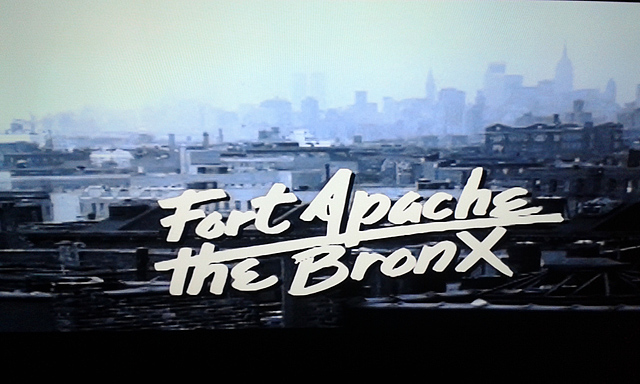By Leopold Manswell
The Bronx in film is a character that’s too rough to be loved and is marked for ruin. For those who are not familiar with the borough, the only reference available to them is usually content Hollywood produces for the big and small screen.
Bronx historian Lloyd Ultan spoke to the authenticity of these portrayals of the Bronx. Ultan watched a segment of current Netflix series, The Get Down, a coming of age story about a group of kids from the Bronx pursuing music careers in the late 70s. “This is the first project I have seen that focuses upon the music that actually started in the Bronx, which is hip hop,” he said. “They showed a little bit of break dancing, which also started in the Bronx.”
However, with a sharp eye Ultan was able to spot the historical inaccuracies from the trailer. “One thing that disturbed me was that they show a building on fire and that may be a throwback to something that no longer existed,” he said. “‘The Bronx is Burning’ syndrome was over by the early ‘70s.”
Aside from a few minor details, Ultan had mainly a positive first impression of the Netflix series. He didn’t speak as fondly of Daniel Petrie’s Fort Apache, the Bronx (1981). “Here’s a film, that shows a neighborhood filled with people who seem to be feral people who are ready to pounce on anybody who is unwary,” he said. “A police precinct that is filled with corrupt people who also hate the people that they have to patrol. There’s even a horrid scene where there’s a policeman who picks up a perpetrator and throws him from off top of a roof.”
Ultan said after President Jimmy Carter walked on the rubble of the devastated Charlotte Street in the Bronx, the world took notice, and Hollywood, some years later, concocted a story highlighting all of the borough’s negative aspects. His biggest issue with Fort Apache, the Bronx, was the “shock and horror that goes through a person’s mind when he sees the film.”
Ultan said A Bronx Tale (1993) was considerably more true to life. “You do have a depiction of people who are criminals, the Mafioso,” he said. “But you also have a reflection here on the part of a father who is a hardworking man, a bus driver, who is trying to raise his son the right way.”
Ultan cited director Spike Lee as an example of someone who wrote about Brooklyn fondly and created films that were a symbolic love letter to his hometown. A similar Bronx example, Ultan said, is City Island (2009), which tells the story of Vince Rizzo, who discovers that he had an illegitimate son earlier in life. Rizzo is a prison guard at the same prison where his son is incarcerated and he does his part to incorporate him into the family. “When you scratch down to the surface — here is a guy who is trying to do good and keep everything together,” Ultan said.
Ultan also brought up the television series The Goldbergs (1949-1957), not to be confused with the current program of the same name on ABC. It was comedy program about a Jewish family living in the Bronx that had a “warm-hearted view” of the borough. “At that time, Jews were the largest ethnic group in the Bronx,” he said. “It reflected the Bronx at that time.”
Then Jimmy Carter came in 1977 and soon that picture changed, Ultan said. Wolfen (1981), a picture filmed in the Bronx about creatures eating humans and other stories focused on mayhem and crime cames out.
“I think it’s an attempt by Hollywood, which is 3,000 miles away, to try to reflect the times,” he said. “There’s no question that there’s crime in the Bronx. There’s no question that there’s drugs in the Bronx. There’s no question that there’s poverty in the Bronx. But that doesn’t mean that the people are as they are depicted.”








No comments